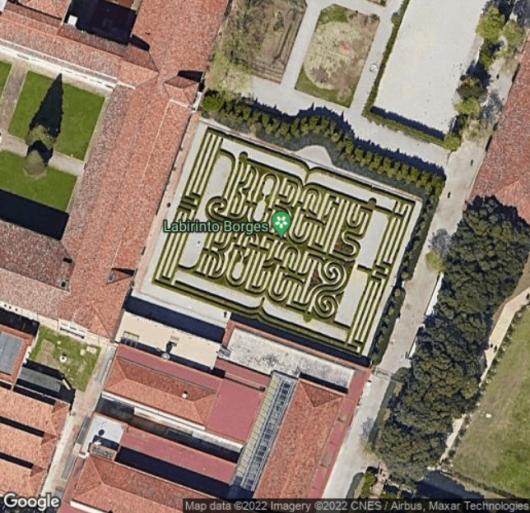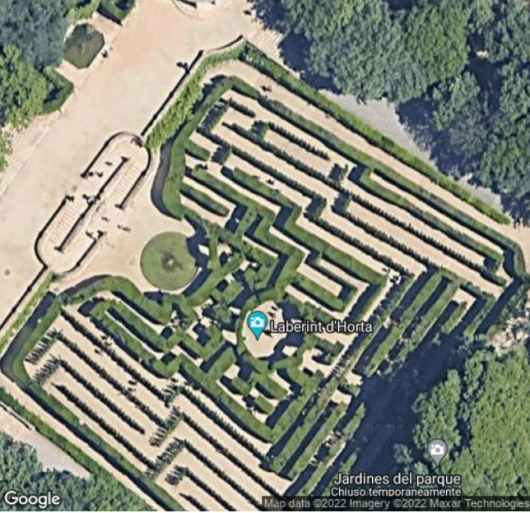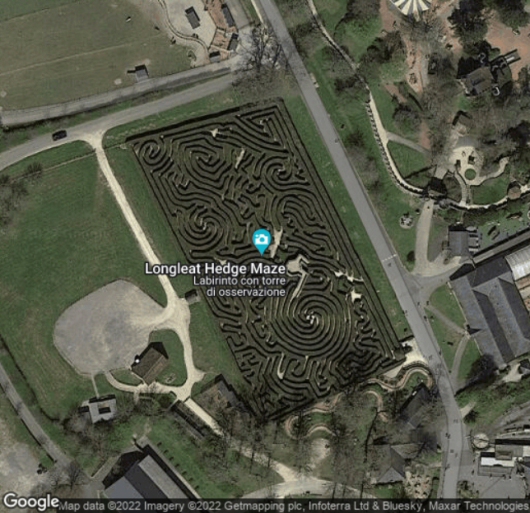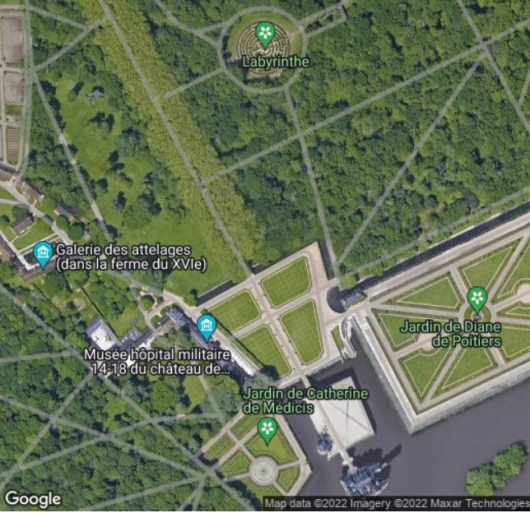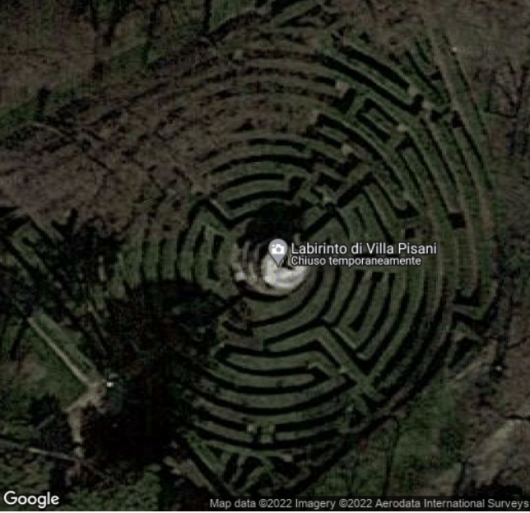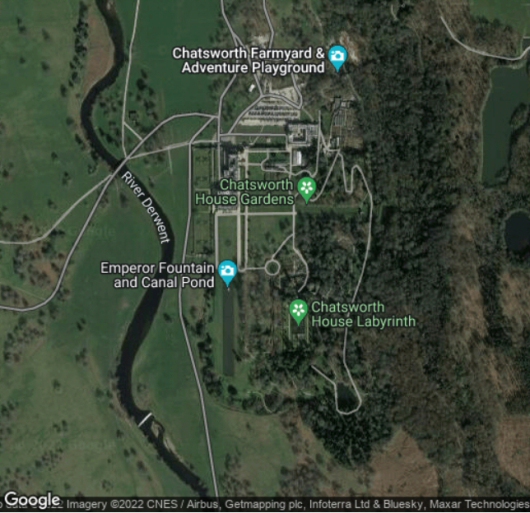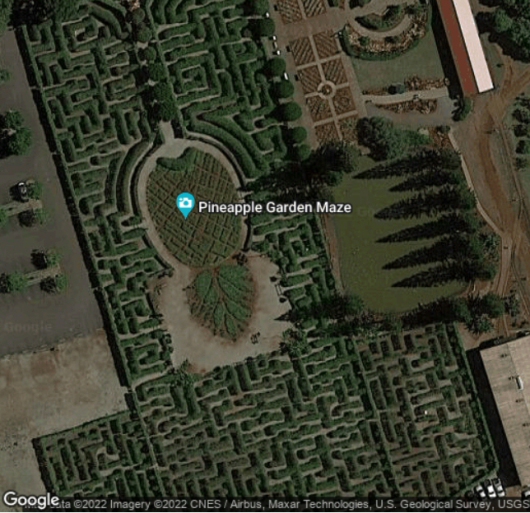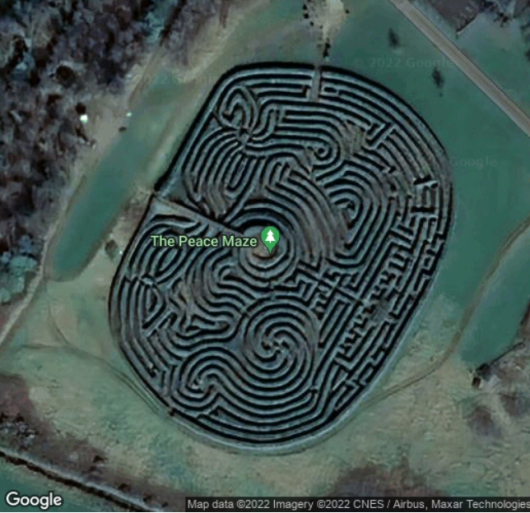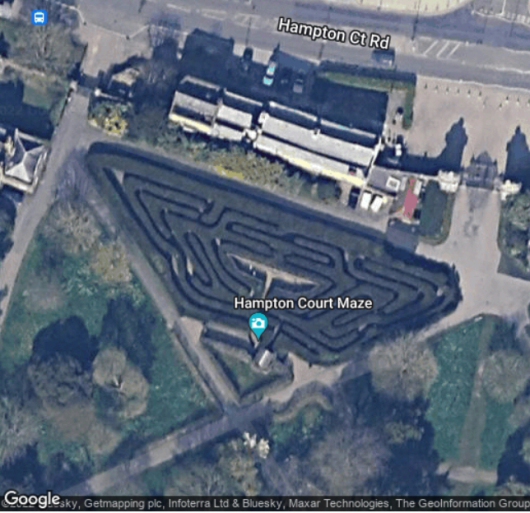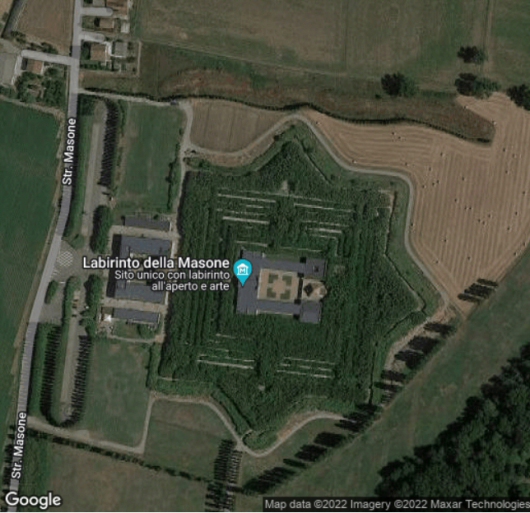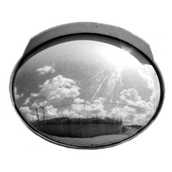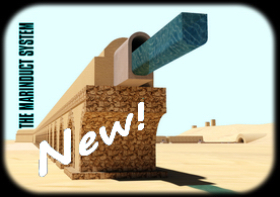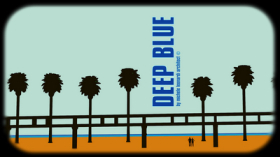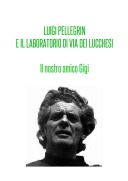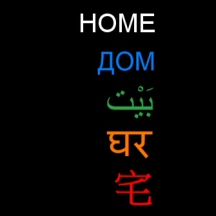Gardens 9
GREEN LABYRINTHS
Labirinto Borges
at San Giorgio Monastery in Venice, Italy. More info on Wikipedia: Monastero di San Giorgio Maggiore.
Labyrinthe
de Chenonceau
Chenonceaux, near Tours, France Website: Labyrinthe du Château de Chenonceau.
Labirinto di Villa Pisani
in Stra, near Padua, Italy; c. 1721. More info on Wikipedia: Villa Pisani.
Chatsworth House
Labyrinth
in Derbyshire, United Kingdom; 1553 and later; architects: William Talman, Thomas Archer, Jeffry Wyattville, Joseph Paxton, James Paine. More info on Wikipedia: Chatsworth House.
Pineapple Garden Maze
at Dole Plantation, near Whaiawa, Hawaii, U.S.A. Website: Pineapple Garden Maze.
The Peace Maze
Castlewellan, United Kingdom of Great Britain and Ireland. More info on Wikipedia: Castellwellan Forest Park.
Hampton Court Maze
Molosey, Greater London, United Kingdom. More info on Wikipedia: The Hampton Court Palace.
BIBLIOGRAPHY
- Paolo Santarcangeli: "Il libro dei labirinti", 348 pages, Edizioni Frassinelli 1984, Sperling & Krupfer Editori-Gruppo Mondadori, Milano, 2000-2005, Italy. Language: Italian.
Original version in Italian. L'immagine del labirinto ha una storia millenaria per la ragione che l'uomo è da sempre affascinato da ciò che gli parla della condizione umana e cosmica. Esplorando graffiti rupestri, pavimenti di cattedrali e palazzi antichi, l'autore visita le profondità storiche di questa idea primordiale e ricostruisce un modello, sempre uguale e sempre variato, di qualcosa in cui abitiamo da tempo immemorabile, tanto che non possiamo pensare nei termini che esso ci impone. Pubblicato nel 2000 nella collana Rivelazioni di Sperling & Kupfer, il volume viene proposto in una nuova edizione illustrata.
- Marco Maria Sambo: "Labirinti: da Cnosso ai videogames ", 431 pages, Alberto Castelvecchi Editore, Roma, 2004, Italy. Language: Italian.
Migliaia di immagini, dalla più remota antichità ai giardini rinascimentali, dagli esperimenti sul comportamento ai videogames, dagli scacchi a Internet, ci dicono una sola cosa: il labirinto è una metafora universale, uno specchio dello strato più profondo e antico della nostra mente. È il confine di rischio tra noto e ignoto, tra vita e morte, tra viaggio e ritorno. Ma il labirinto è anche una struttura della Natura, un elemento ricorsivo che si incontra ciclicamente nel rapporto tra pensiero e immagine, e nei modelli di ogni comportamento intelligente. L'autore è un giovanissimo architetto che si occupa di design, storia e interpretazione culturale dell'architettura e di letteratura fantastica.
- Paolo Santarcangeli: "El libro de los laberintos", 349 pages, Ediciones Siruela, Madrid, Spain, 2002. Language: Spanish.
Version in Spanish. Paolo Santarcangeli propone en este libro un recorrido histórico novedoso y completo por todos los laberintos imaginables, trazando su génesis y evolución en todos los ámbitos y en todas las épocas en los que ha encontrado forma de expresión. Porque el laberinto, según nos cuenta Santarcangeli, es un arquetipo universal de vocación tanto esotérica como exotérica, de tragedia y de juego, que se elabora en representaciones que varían y se parecen tanto como pueden variar y parecerse todas las culturas del orbe. En un sentido antropológico, el laberinto vendría a ser una de las figuraciones mentales y plásticas que mejor reflejan la universalidad cultural de la humanidad en su disyuntiva perenne, situada ante encrucijadas que exigen una decisión, que postulan una opción vital, una búsqueda ininterrumpida del centro para eliminar al Monstruo que anida en su seno. Así, lo que Santarcangeli desarrolla en este extenso y documentado estudio es la historia del hombre frente a los enigmas que le formula constantemente la vida y su afán por dilucidar y esclarecer, por recrear e interpretar a través de los tortuosos caminos del conocimiento, su esencia y la más laberíntica e inevitable de sus consecuencias: la muerte.
- William Henry Matthews: "Mazes and Labyrinths: A General Account of their History and Development", 348 pages, Andesite Press, U.S.A., 2015.
The hedge-maze, which is the only type with which most of us have a first-hand acquaintance, is generally felt to be a survival of a romantic age, even though we esteem its function as nothing higher than that of a playground for children. Many a tender intrigue has been woven around its dark yew alleys. Mr. Compton Mackenzie, for example, introduces it most effectively as a lovers' rendezvous in "The Passionate Elopement," and no doubt the readers of romantic literature will recall other instances of a like nature. The story of fair Rosamond's Bower is one which will leap to the mind in this connection. This type of maze alone is worth more than a passing thought, but it is far from being the only, or even the most interesting, development of the labyrinth idea. What is the difference, it may be asked, between a maze and a labyrinth? The answer is, little or none. Some writers seem to prefer to apply the word "maze" to hedge-mazes only, using the word "labyrinth" to denote the structures described by the writers of antiquity, or as a general term for any confusing arrangement of paths. Others, again, show a tendency to restrict the application of the term "maze" to cases in which the idea of a puzzle is involved. It would certainly seem somewhat inappropriate to talk of "the Cretan Maze" or "the Hampton Court Labyrinth," but, generally speaking, we may use the words interchangeably, regarding "maze" as merely the northern equivalent of the classic "labyrinth." Both words have come to signify a complex path of some kind, but when we press for a closer definition we encounter difficulties. We cannot, for instance, say that it is "a tortuous branched path designed to baffle or deceive those who attempt to find the goal to which it leads," for, though that description holds good in some cases, it ignores the many cases in which there is only one path, without branches, and therefore no intent to baffle or mislead, and others again in which there is no definite "goal." We cannot say that it is a winding path "bounded by walls or hedges," for in many instances there are neither walls nor hedges. One of the most famous labyrinths, for example, consisted chiefly of a vast and complicated series of rooms and columns. In fact, we shall find it convenient to leave the question of the definition of the words, and also that of their origin, until we have examined the various examples that exist or are known to have existed.
- Monique Mosser and Georges Teyssot: "The Architecture of Western Gardens: A Design History from the Renaissance to the Present Day", 544 pages, The MIT Press, Massachusetts Institute of Technology, Cambridge, MA, U.S.A., 1991.
The Architecture of Western Gardens presents an international tour of garden design from the Renaissance to the present. As object and as literature, it is a sumptuous and unprecedented resource. The more than seventy essays by scholars from Europe and America all commissioned for this book - and over 650 illustrations raise the standard of garden literature to a new level. The result is an invaluable compendium that will serve as a fundamental starting point for exploring the many expressions of the place where nature and culture, project and diversion, work and pleasure meet. Organized chronologically, the essays and illustrations make up a mosaic of the garden in the Western world. The humanist garden in Renaissance Italy, the concepts of the "Sublime" and the "Picturesque," mazes, grottoes, and other curiosities, city parks, American land art, and even Disneyland are among the topics treated. Discussions of characteristic aspects of history and theory are followed by analyses of individual gardens as paradigms of their type: the Hortus Palatinus in Heidelberg, the Parc Monceau in Paris, the Park Güell in Barcelona, Stowe in England, and many more. The illustrations are a model of how iconography can function as text. They include ground plans meticulously redrawn from original archival material to provide precise information on the scale and nature of many of the projects, as well as a wealth of drawings, reconstructions, paintings, and photographs.
Jean Jacques Lequeu (1757-1825?), dessinateur: "15 tracés de jardins : bosquets, serres, jardins fortifiés, jardins chinois, jardins français, labyrinthe, ...", dessin, 1750-1824. Source: Bibliothèque nationale de France, website: gallica.bnf.fr .

